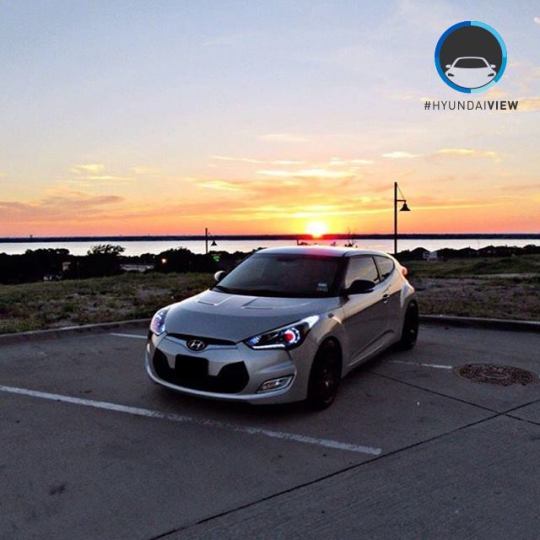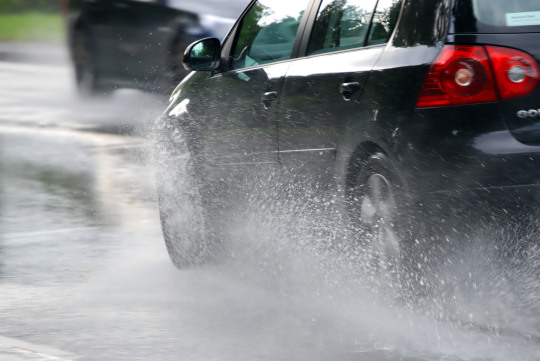Photo

A hands-free smart trunk is just another helpful feature of the new Elantra. Learn more here: hyundai.us/zBQzrg
0 notes
Photo

Obligatory sunset selfie.
0 notes
Text
Who said hybrids can't be stylish?
The Hyundai Sonata Hybrid is at the pinnacle of hybrid cars!

READ: Hyundai hybrid wows with increased fuel economy.
0 notes
Link
0 notes
Photo

May the new year bring you health and happiness! #Welcome2016
0 notes
Photo

'Tis the season for friends and family, so from ours to yours, we wish you the happiest holiday.
0 notes
Photo

Holiday Driving Tips
Millions of travelers will take to the roads between Thanksgiving and New Year's Day. This added traffic can bring along with it added stress.
In addition to the universal rules - do not speed, do not text and do not drink and drive - here are some additional tips to hopefully make holiday driving more enjoyable and safe, and to reduce those stress levels.
Make sure your vehicle is operating properly. The lights, oil, tires (condition and pressure level), belts and hoses, brake fluid, antifreeze fluid and the condition of the battery should all be checked by a professional before leaving.
Plan Ahead. Plan your route in advance and check traffic reports and weather conditions before you leave. As a backup, bring along a paper map. Even with a GPS system it's wise to bring along another option should something occur where using a GPS is not possible.
Drive carefully. Follow speed limits and remember excess traffic and congestion on the roads may mean you'll have to travel below posted limits.
Drive defensively and don't respond to aggressive drivers: It's far less frustrating to let an aggressive driver pass than to become aggressive yourself.
Get a good nights sleep. It sounds simple, but a good night's sleep before departing can help make the trip more enjoyable. Be sure to take regular breaks during long road trips as it can be very dangerous to drive when you're overly tired. Pull over and stop in a safe area if you are tired, or around every 100 miles or 2 hours.
Be prepared for emergencies - keep a blanket, boots, an extra pair of gloves and a flashlight in the trunk of your car. Traction mats, kitty litter or sand can be used to improve traction on icy surfaces. Also, keep the gas tank at least half-filled to prevent fuel line freezing in colder climates.
Don't forget to secure your home when you leave, and do not post on social media sites that you will be away. Timers to turn lights on and off can give the impression that the property is occupied. If possible, have a neighbor or relative check on the house and even park a car in the driveway. Let someone know where you are going and what time you expect to be there.
Finally, relax. Driving during the holiday season can be stressful. Frustration can lead to poor decisions and risky behavior behind the wheel. However, with the right attitude and some pre-planning it can also be more enjoyable.
While it can be stressful imagining the miles that lay between you and your destination, a couple of deep breaths once in a while along with a positive attitude can go a long way. Remember to relax and focus on what's truly important: reaching your destination safely and having fun with family or friends.
Happy Holidays! Drive Safe!
0 notes
Link
Your house isn't the only thing you can decorate this holiday season. Take a look at these cars that are even brighter than the front door!
0 notes
Photo

When you need a car that can take you places, visit our dealership.
0 notes
Photo

From our team to your family, Happy Thanksgiving!
0 notes
Photo

Will you be traveling next week?
Check out these Thanksgiving Driving Tips before you hit the road: http://goo.gl/ZKJxlG
0 notes
Photo

Don't let unpleasant surprises ruin your weekend. You're much better off visiting the dealership. Stop by today!
0 notes
Photo

What do you look for in a new car?
A) Safety
B) Style
C) Fuel Economy
D) Horsepower
?
0 notes
Photo

Do you have an emergency roadside kit in your car?
You should! Check out some items it should include.
0 notes
Text
5 VERY Wrong Ways to Drive in the Rain

1. Don't drive toward the sides of the road.
Roads are constructed so that they're highest in the middle. The difference may be slight, but it causes water to run off the center hump (actually, it's called a crown) and drain toward the edges. If you're driving in the rain you want to avoid standing water, which means that you want to be where the water isn't -- and that's in the center of the road. No, the center won't be dry either, especially if it's still raining, but it's going to be the driest place around that isn't in somebody's garage.
2. Don't leave your headlights off (but don't make them too bright either).
We sometimes assume that, just like everything else, our headlights are all about us. They help us see what's in front of us, kind of like a pair of big flashlights. Actually, when it's raining, what you need your headlights for, even in the daytime, is so that other people can see you. But if headlights help you be seen, you don't want to unintentionally blind people with them either. Other drivers are already having enough trouble finding their way around. Don't dazzle them by turning on your high beams.
3. Don't drive if the windshield is so covered with rain that you can't see!
Okay, this one sounds like a no-brainer, but isn't it amazing how many people seem to have been born without brains? It doesn't matter if you know the road so well that you could drive it blindfolded while sound asleep, you still shouldn't drive it while there's enough water on the windshield to provide a home for goldfish. Not being able to see ahead, you don't necessarily know what's there. There could be stopped cars in front of you that you can't see. There may be pedestrians wandering around befuddled in your path. You may not even be driving as straight as you think you are and could be heading straight for a bridge abutment. When visibility gets low, pull off the road as quickly as it's safe to do so. Stop your car. Pop a CD in the dashboard player and listen to soothing music while you wait for things to clear up again. Get out your cell phone and have a conversation with your best friend (but only when you're not driving, remember?). Turn to the person next to you and get to know them better. Wonderful marriages have resulted from less auspicious beginnings.
4. Don't drive through a river.
We don't mean that literally, but if you see water flowing across the road from one side to the other and don't know how deep it is, don't try to drive across it! Every year hapless drivers figure their cars won't be harmed by fording a tiny little stream of rainwater that couldn't be deeper than, oh, an inch or so. You'd be surprised how many of these people then find themselves swept away, off the road and into a vicious current of rainwater that could carry them for hundreds of feet as they desperately try to get out of their car and grab a tree limb to keep from disappearing below the waterline. Better to wait out the storm and the rainwater than to lose your life -- and quite possibility the lives of those near and dear to you -- because you thought a little water couldn't hurt you.
Even if the water isn't moving, if the bottom isn't visible you don't know what's underneath it. There could be a pothole the size of a swimming pool. There could be broken glass or nails that fell off a truck. If you can't see the bottom, don't risk putting your tires on the submerged pavement -- or your life on the line. Either stop a safe distance from the water's edge or, if possible, find a way to drive around it.
5. Don't drive too fast for conditions!
Speed limits exist to tell you how safe it is to drive under good conditions. When conditions are bad and roads are wet, speed limits are worthless. Drive well under them -- and the worse the conditions, the lower the speed you should drive.
The worst danger of driving too fast in rain is hydroplaning. Hydroplaning is what happens when your car thinks it's a boat while it's still on the highway.
Usually your tires can slice their way through the water in front of them and keep in contact with the surface of the road. But when the road is wet and you're going too fast, your car can actually begin to float on top of the water and the tire tread loses contact with the road surface. This is bad. Very bad! When your tread loses contact with the road surface, you can no longer steer. You can no longer brake. This is what happens when you hydroplane. And you often don't know that you're hydroplaning until you hit the brakes and the car goes skidding out of control. Therefore it's better not to travel at hydroplane speeds to begin with.
What do you do if you realize you're hydroplaning and are already out of control? First off, don't panic (though, trust us, you'll be tempted to). Don't hit the brakes, because that just makes it worse. Let up on the accelerator so that any remaining traction can slow your speed. And drive straight. Don't try to turn. If the car is veering off in a direction you don't want to go, don't fight it; just follow your wheels. And as the car slows, , you'll be back under control.
At this point we recommend getting off the road and giving yourself time for your heart rate to slow back down. You'll need it.
#advice#driving#driving in the rain#safety#tips#tips for driving in the rain#what NOT to do when driving in the rain
0 notes
Photo

Halloween Safety Tips for Drivers
Help protect trick-or-treaters by following these driving safety tips on Halloween, or on the night your community hosts Halloween activities. Be especially careful between 4 and 8 p.m., when most severe vehicle/young pedestrian collisions happen.
Drive slowly, and don't pass stopped vehicles. The driver might be dropping off children.
Park your mobile phone. Avoid distractions by waiting until you've stopped to call, text, or surf. Get more mobile phone safety tips.
Watch for children darting into the street. Kids can cross the street anywhere, and most young pedestrian deaths happen at spots other than intersections.
Yield to young pedestrians. Children might not stop, either because they don't see your vehicle approaching or don't know how to safely cross the street.
Communicate with other drivers. Always use your turn signals. And if you have to pull over to drop off or pick up your kids, turn on your hazard lights.
And, to keep your own trick-or-treaters safe:
Teach them how to safely cross streets.
They should look both ways and cross only at corners and crosswalks.
Consider indoor community Halloween programs for younger kids. Some communities also offer to help you inspect your kids' treats to make sure they're safe to eat.
Brighten them up. Give them flashlights and glow sticks, and/or use reflective tape on their costumes, so drivers can see them.
#driving safety#Tips for Drivers#Halloween#Halloween Driving Safety Tips#Halloween Safety Tips for Drivers
1 note
·
View note
